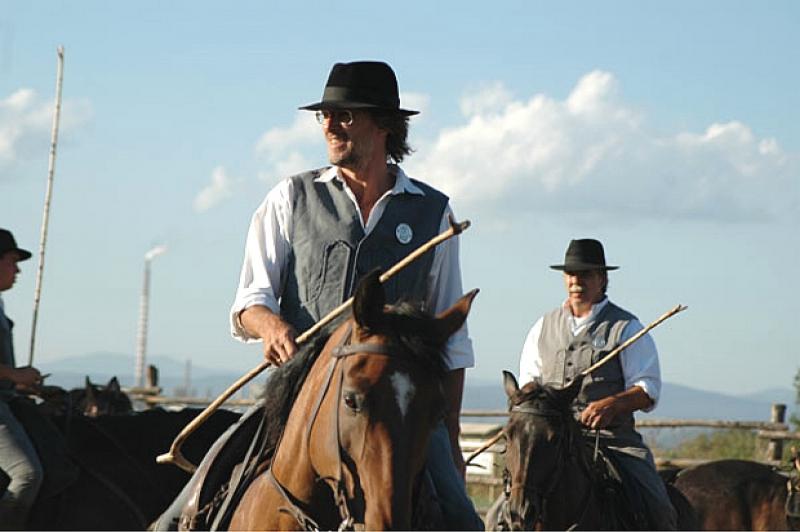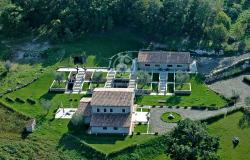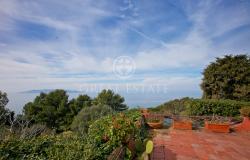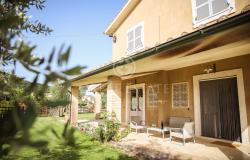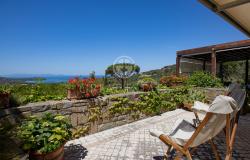words by Felix Petrelli
Italy is not all jovial restaurateurs, plump housewives and slick Milanese businessmen. Rural Italy, though struggling a bit, still forms an important part of the national psyche. Jobs in the rural sector cover everything from manual labour to highly qualified viticulturalists, but there is one mestiere in particular that captures the hearts and minds of many, Italians and visitors alike: that of the butteri, or Italian cowboys of the Maremma.
This region was an accursed land until last century, virtually uninhabited except for a few farmers and fishermen. The ancient Etruscans, followed by the Romans, drained its swamps to create richly fertile farming land. After the collapse of the Roman Empire, the drainage channels became choked, turning the Maremma into an inhospitable wilderness of marshland and stagnant pools, plagued by malarial mosquitoes. Re-draining of the land began again in the late 18th century and, with the help of insecticides, the malarial mosquitoes were finally eliminated only in the 1950s.
The butteri have been a part of the landscape along the western coast between Rome and Livorno for at least the last 250 years. Skilled horse handlers, they worked for the semi-feudal landlords, breaking wild horses and shifting wild Maremma longhorn cattle in the autumn round-ups or in search of new pastures. During the fascist years, as the mosquito-infested marshlands and forests in Lazio were cleared, the butteri moved north into the Maremma, a largely untamed wilderness of mountainous forest-covered hinterland.

Wild West Show
The Tuscan horsemen were famous for their highly skilled herd handling and their unsurpassed riding ability. Local legend has it that in 1911 Buffalo Bill and his travelling troupe of American cowboys invited the butteri to a rodeo in Rome. Much to Bill’s surprise, the Americans were beaten soundly by their Tuscan counterparts. But the Americans have their own version of the story...
The working day of the buttero would start before sunrise. The tradition of working horses is deeply rooted in this area, not least because it was a no-man’s-land – inhospitable, wild, scrubby high ground and wetlands. Like the Wild West in the United States, it was the only free land where settlers came to feed their families.
Only a few crazy skilled horsemen would have decided to make this region their home. Now there are a few wild places that have been transformed into parks where you can ride for days without seeing a house or another human being, something which I thought was impossible in Italy, where almost everywhere is crowded.

Butteri riding
Like for Western riding, the Tuscan riding style developed according to the butteri's needs of working livestock from horseback. Like a cowboy, a Buttero rides his horse with one hand, holding a mazzarella, a long stick with a hook in the other hand employed for herding oxen and horses. He usually rides the typical horse of the Maremma, Cavallo Maremmano, and tends cattle (such as the native Maremmana breed) and sheep. The characteristic saddle is called a bardella.
The buttero's attire consists of grey cotton pants, a velvet jacket and a black hat. He protects himself from the rain with a large mantle called the "pastrano".
Also belonging to the tradition are the two types of saddle used in Monta Maremma: the scafarda, from the military built on wooden saddle, and the poorest bardella.
On the first Sunday in August the Butteri gather and brand the cattle, showing off their skills as horsemen.

The lure of the land
Today, as modern farming practices and the creation of National Parks limits the need for skilled horsemen and cattle handlers, the profession of the buttero is all but extinct. Their sons and grandsons have left the farms for the cities, but some return, to live the life of their forefathers, if only for a weekend, recreating the transumanza (or round-up) and keeping alive the incomparable horse-handling skills that once defined the tough men of the Maremma.
I had the fortune to join a transumanza with a dozen butteri and a group of young colts and got to know two of these modern-day cowboys. We had already been riding for a day and it had been tipping down with rain for at least half the time we were in the saddle. Nobody talked very much as they concentrated on keeping the horses together and I focussed on keeping myself in the saddle. Our first proper conversation was late at night after a huge five-course dinner eaten al fresco under the clear sky. I was helping two young butteri finish the bottles of wine.

A dying breed
They told old stories of butteri, stubborn stallions and dangerous bulls. I sat and listened as my admiration for them grew, thinking that maybe I could throw away my computer and spend my life wrestling heifers and breaking in stubborn colts. Then one of my companions, Nicola, revealed something to me: ‘I would not call myself a buttero, because as a profession they do not exist anymore. Yes, we are all good horsemen, but none of us does this job for a living like in the old days.’
In spite of his modest protestations, Nicola seemed the nearest thing to a real cowboy to me. He farms about 60 hectares of organic olives and vineyards, and breeds Maremma horses and cattle. And in his spare time he tames wild horses and competes in rodeos. He’s a modern buttero who has created an agriturismo on his farm and welcomes visitors to share a part of his world.
‘Guests are welcome to eat with us if they wish," Nicola told me. 'This is the Maremma style but more importantly it is the new way of keeping the traditions of the butteri and farming itself alive. Without tourism lots of us would give up. The butteri would disappear, because nowadays there is no need to own a horse to have a farm, people use tractors. Thanks to modern tourism and organic farming, we can now keep our grandparents’ traditions alive.’

Their current work means that you can visit the area around the province of Grosseto, the Regional Maremma Park and the Uccellina Mountain on horseback.
Today the job of the few remaining butteri and their Association of the Butteri of the Alta Maremma is focussed on keeping the traditions of the Maremma butteri alive, but also working on something new, to create new ways of enjoying one of the most beautiful and unique wild corners of Italy in the old way, by horse.
------------------------------------------------------------------------------
To know more about butteri, rodeos and the chance to come to Italy to ride with the butteri please visit:
http://www.butteri-altamaremma.com/italiano/monta.htm
http://www.turismoinmaremma.it/
